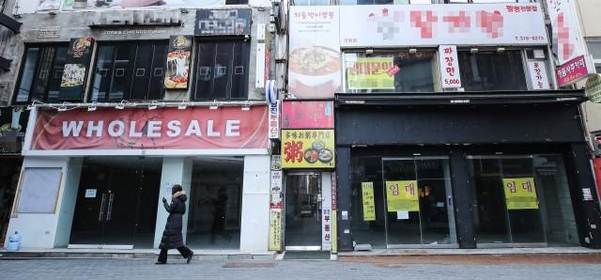Input 2021.02.08 20:36
Job search benefit payment of 9602 billion won… New applicants all-time largest
In the aftermath of the third pandemic of the novel coronavirus infection (Corona 19), the increase in employment insurance subscribers last month was the lowest in 17 years. The number of people applying for job-seeking benefits has risen to the highest level ever.

Employment insurance subscribers have drastically decreased, mainly in the face-to-face service sector that is susceptible to the spread of Corona 19. The number of employment insurance subscribers in the lodging and food industry decreased by 54,000 from the same month last year, showing the largest decrease in monthly subscribers for the industry.
The number of subscribers to the business service industry including the travel industry and the arts and sports industry decreased by 20,000 and 9,000, respectively. The number of subscribers to public administration, which has prevented the fall of the employment index due to the large-scale supply of jobs in the public sector, increased by only 29,000.
On the other hand, in the non-face-to-face service sector, where demand increased due to’social distancing’, employment insurance subscribers also increased significantly. Including online shopping, the number of non-store retail and courier services increased by 22,000 and 2,000, respectively. The number of subscribers to the information service industry increased by 5,000 due to the increasing demand for digital contents such as games and movies.
The number of employment insurance subscribers in the manufacturing industry was 3537,000, down 13,000 from the same month last year. The number of subscribers to the manufacturing industry has been on a decline for 17 months since September last year, but the extent is gradually decreasing.
The number of subscribers to the electronics and telecommunications industry, which is a major industry including semiconductors, increased by 6,000. Other transport equipment industries such as shipbuilding were found to have given 12,000 people.
By age, those in their 40s, 50s, and 60s and older had an increase in employment insurance subscribers last month, but those under the age of 29 and those in their 30s decreased by 25,000 and 57,000, respectively. Employment insurance subscribers under the age of 29 showed negative after 4 months.

“As the number of employment insurance subscribers continues to increase, the number of new applicants for job-seeking benefits continues to increase year by year,” said Kim Young-joong, head of the employment policy department of the Ministry of Labor at a briefing.
By industry, the public administration and business service industries were the largest with 29,000 people, followed by the manufacturing industry with 28,000 people. “When (government and local government job projects) are completed in December (next year), new employees who apply for job-seeking benefits will occur in January,” Kim said. “I think that effect is reflected.”
When asked,’Aren’t the majority of job program participants convert to unemployed at the beginning of the year and receive job-seeking benefits,’ said Kim. Yes, it is not eligible for job-seeking benefits.”
The monthly labor market trends released by the Ministry of Labor are targeting regular and temporary workers among employment insurance subscribers, but not to special employment workers, freelancers, self-employed, and ultra-short-time workers.
